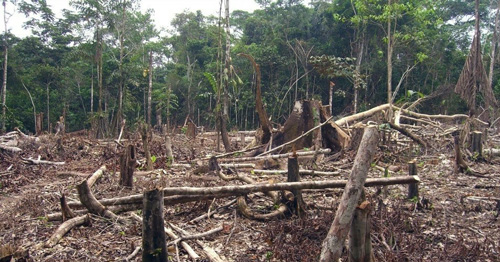NEW research suggests that the loss of forest habitat increases contact between humans and nonhuman primates — and therefore the transmission of diseases from animals to humans, as with coronavirus disease 19 (Covid-19).
New research suggests that deforestation increases animal-to-human disease transmission.
A new study published in the journal Landscape Ecology has identified some factors that bring humans and nonhuman primates into contact.
The researchers point out that the continued destruction of forest habitats, for agricultural use or human habitation, would cause this contact to become more frequent, as humans and nonhuman primates would be forced into closer proximity.
As a consequence, the chances of diseases transmitting from these primates to humans are also likely to increase.
Severe acute respiratory syndrome coronavirus 2 (SARS-CoV-2), which has caused the Covid-19 pandemic, is an example of a virus that spread from animals to humans.
According to a review in the Proceedings of the National Academy of Sciences of the United States of America, more than half of all human pathogens are believed to be zoonotic, meaning that they first emerged in nonhuman animals and were then transmitted to humans.
A variety of interlocking factors have increased the chances of these pathogens spreading to humans.
According to the lead author of the study, Laura Bloomfield, who is studying to be a doctor of medicine and who is also a Ph.D. candidate at the Stanford School of Earth, Energy & Environmental Sciences, in California, “At a time when Covid-19 is causing an unprecedented level of economic, social, and health devastation, it is essential that we think critically about how human behaviors increase our interactions with disease-infected animals.”
The study looked, in particular, at forests and rural communities in Uganda that exist in close proximity to forest habitats. A key factor that has put humans in contact with these habitats is the continued transformation of forests into agricultural land and the proximity of the two types of land.
The authors note that in Uganda, migration patterns have exacerbated these effects of deforestation, resulting in humans and animals accessing the same small areas of forest for food, or in the case of humans, for construction materials.









